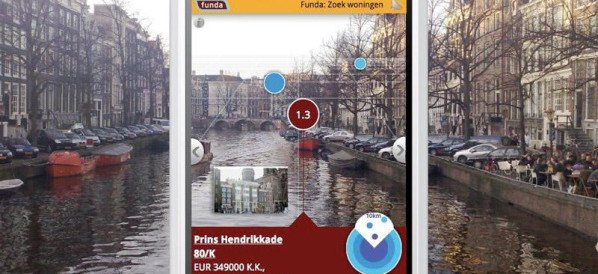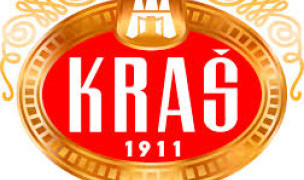 23 Terms
23 TermsHome > Terms > English (EN) > Philadelphia, Pennsylvania
Philadelphia, Pennsylvania
A favorite destination for visitors since its founding in 1682, modern Philadelphia— America’s fifth-largest urban center—forms the hub of a regional intersection embracing southeastern Pennsylvania, southern New Jersey and northern Delaware, encompassing some 5 million people (about 1.5 million of whom live in the city itself). Situated on the Delaware and Schuylkill rivers, the “City of Brotherly Love” was the seat of a colony which its founder, British Quaker gentleman William Penn, envisioned as a model “holy experiment” in democratic government. The Declaration of Independence and the American Constitution were crafted here; the area where these documents were written continues to be a major tourist attraction. Modern Philadelphia, nonetheless, struggles with rustbelt dilemmas of disappearing industry divided and sometimes decaying neighborhoods, race and class divisions, crime, poverty homelessness and drugs.
The city quickly became cosmopolitan. By 1800 there were numerous neighborhoods and institutions to support its great diversity: Swedes, Dutch, Germans, British, African Americans, American Indians, Catholics, Jews and a variety of Protestants formed churches, community organizations and commercial enterprises suited to their specific needs. By 1750 a college, theater and lending library were among the city’s many attractions; by 1825 museums, historical societies and scientific organizations, as well as insurance and banking institutions provided the foundation for technological and intellectual leadership. Shipbuilding, dating from the city’s beginning, was joined in the nineteenth century by factories to build railroad cars and automobile parts and fuel refineries. By the mid-twentieth century textiles, steel, beer, cigars and heavy machinery were among the goods exported from the thriving port to national and international destinations. The 1950s, however, saw the steady decline in maritime trade, as distribution by truck and air made it attractive for factories to relocate to where warmer weather and non-union labor reduced production costs.
Since 1950, aggressive urban planning has revived the economy somewhat and the population decline of the 1970s has slowed. The city whose bonds hit junk status in 1990, has revitalized Center City under Mayor Ed Rendell, while the Delaware River waterfront has been developed for recreation. The region also seeks to become a center of international investing and biotechnical development. Scores of colleges and universities (including Temple and the University of Pennsylvania), six medical schools, more than four dozen public library branches, hundreds of public schools and private schools—education has been a hotly debated issue in local politics—have helped to provide a base for the area’s uncertain and uneven transition from an industrial base to the information age.
Philadelphia is also noted for diverse contributions to American culture—from the television classic American Bandstand, to the “76-ers” basketball team or baseball’s Phillies, to the worldrenowned orchestra, museums and numerous musicians, artists, scientists and entrepreneurs. Its media image, however, is complex, as evidenced in differences between movies portraying upper-class romance (The Philadelphia Story, 1940; Young Philadelphians, 1959), the urbane AIDS issues of Philadelphia (1993) and the nightmarish future of Twelve Monkeys (1995).
Frequently described as “the city of homes,” or the “city of neighborhoods,” Philadelphia is notable for its architecturally human scale, having few tall buildings outside the city center. Instead, many neighborhoods of modestly priced brick or stone row houses cluster near the Fairmount Park system, which covers 10 percent of the city— the largest contiguous city park in the world. This neighborhood network is serviced by an intricate public transportation system, including trolleys, subways and regional railroads like the Main Line linking it with suburbs.
Philadelphia politics have always been complex, with ethnicity, race and class often leading to tension and rioting around elections, through the nineteenth and early twentieth centuries. Perhaps a low point was reached in 1985 when a black mayor, Wilson Goode, bombed the headquarters of the radical group MOVE, burning nearby African American homes as well. Nonetheless, the city has been a leader in social-service development, from early hospitals, orphanages and social-work schools to women’s banks, community colleges and AIDS support networks. In the 1990s, the diverse population, which is approximately 50 percent white and 40 percent African American, has built neighborhoods representative of virtually every country in the world. Despite the blemishes and challenges common to aging cities, the city remains vigorous.
Philadelphia has been the subject of classic historical and sociological studies from W.E.B. Du Bois’ The Philadelphia Negro (1899) to many present-day studies.
- Part of Speech: noun
- Synonym(s):
- Blossary:
- Industry/Domain: Culture
- Category: American culture
- Company: Routledge
- Product:
- Acronym-Abbreviation:
Other Languages:
Member comments
Terms in the News
Billy Morgan
Sports; Snowboarding
The British snowboarder Billy Morgan has landed the sport’s first ever 1800 quadruple cork. The rider, who represented Great Britain in the 2014 Winter Olympics in Sochi, was in Livigno, Italy, when he achieved the man-oeuvre. It involves flipping four times, while body also spins with five complete rotations on a sideways or downward-facing axis. The trick ...
Marzieh Afkham
Broadcasting & receiving; News
Marzieh Afkham, who is the country’s first foreign ministry spokeswoman, will head a mission in east Asia, the state news agency reported. It is not clear to which country she will be posted as her appointment has yet to be announced officially. Afkham will only be the second female ambassador Iran has had. Under the last shah’s rule, Mehrangiz Dolatshahi, a ...
Weekly Packet
Language; Online services; Slang; Internet
Weekly Packet or "Paquete Semanal" as it is known in Cuba is a term used by Cubans to describe the information that is gathered from the internet outside of Cuba and saved onto hard drives to be transported into Cuba itself. Weekly Packets are then sold to Cuban's without internet access, allowing them to obtain information just days - and sometimes hours - after it ...
Asian Infrastructure Investment Bank (AIIB)
Banking; Investment banking
The Asian Infrastructure Investment Bank (AIIB) is an international financial institution established to address the need in Asia for infrastructure development. According to the Asian Development Bank, Asia needs $800 billion each year for roads, ports, power plants or other infrastructure projects before 2020. Originally proposed by China in 2013, a signing ...
Spartan
Online services; Internet
Spartan is the codename given to the new Microsoft Windows 10 browser that will replace Microsoft Windows Internet Explorer. The new browser will be built from the ground up and disregard any code from the IE platform. It has a new rendering engine that is built to be compatible with how the web is written today. The name Spartan is named after the ...
Featured Terms
augmented reality
Augmented reality (AR) is a technology that combines real-world information with computer-generated images and content, and is presented blended in a ...
Contributor
Featured blossaries
Browers Terms By Category
- Cosmetics(80)
Cosmetics & skin care(80) Terms
- Skin care(179)
- Cosmetic surgery(114)
- Hair style(61)
- Breast implant(58)
- Cosmetic products(5)
Beauty(417) Terms
- Nightclub terms(32)
- Bar terms(31)
Bars & nightclubs(63) Terms
- General law(5868)
- Courts(823)
- Patent & trademark(449)
- DNA forensics(434)
- Family law(220)
- Legal aid (criminal)(82)
Legal services(8095) Terms
- Wedding gowns(129)
- Wedding cake(34)
- Grooms(34)
- Wedding florals(25)
- Royal wedding(21)
- Honeymoons(5)




